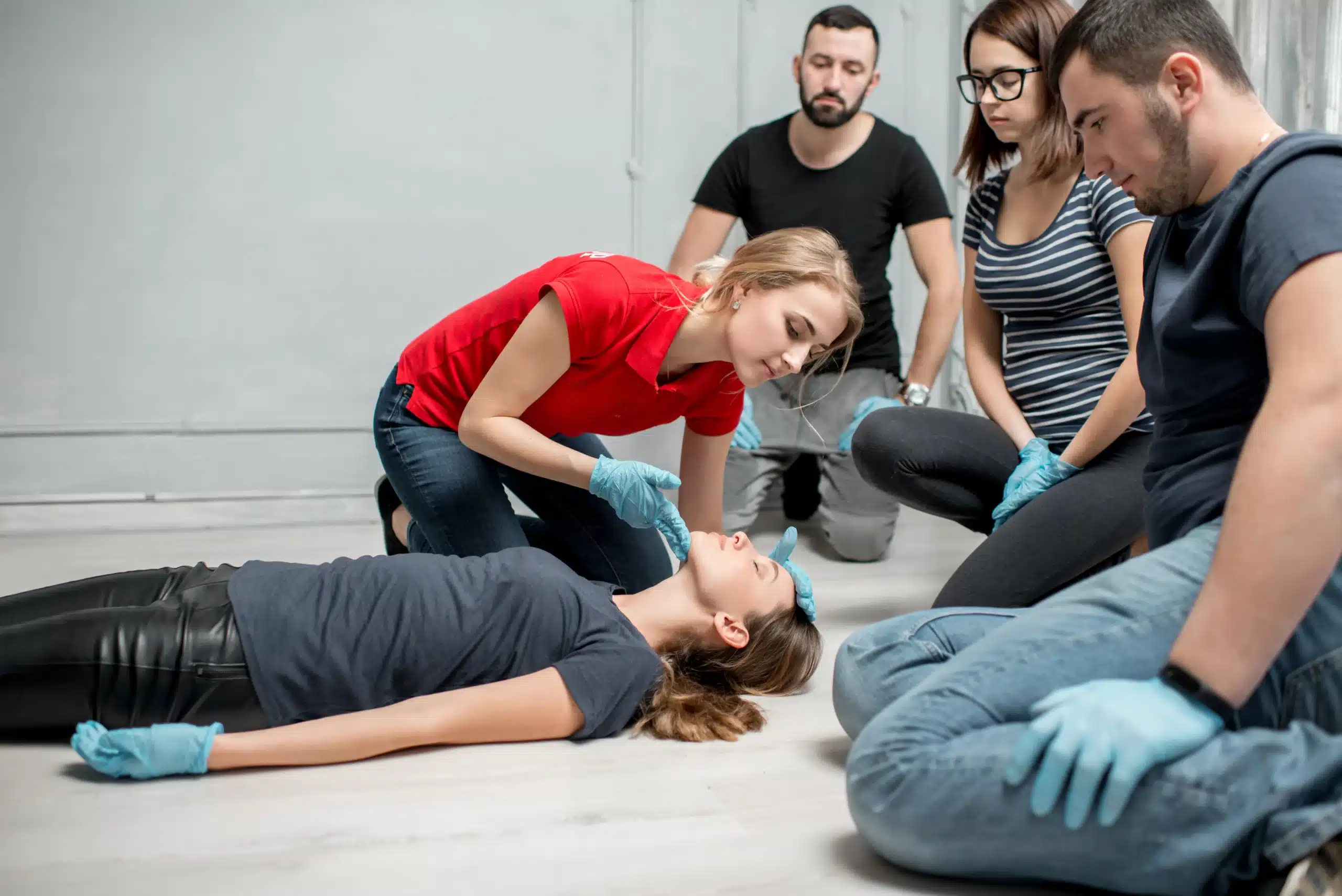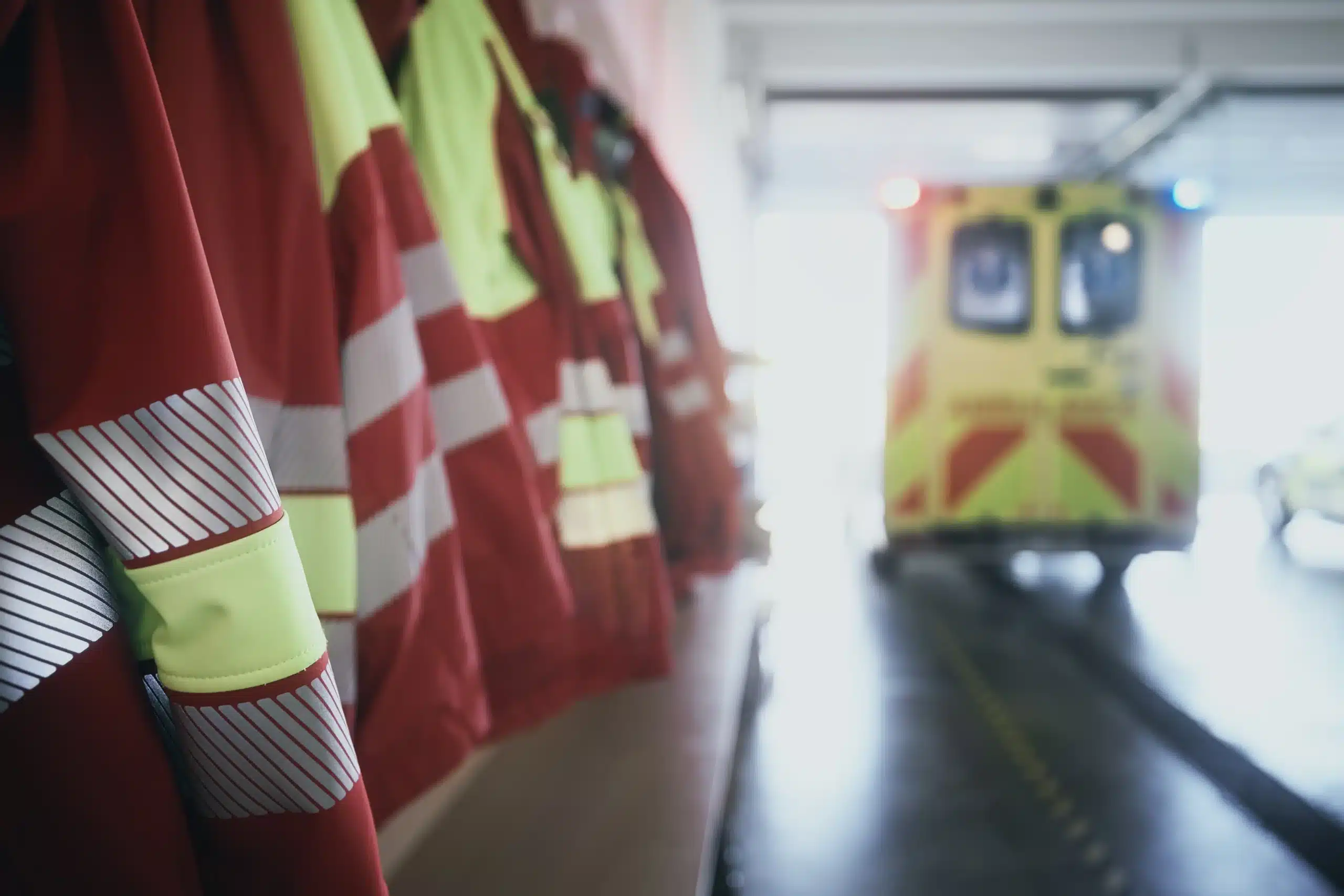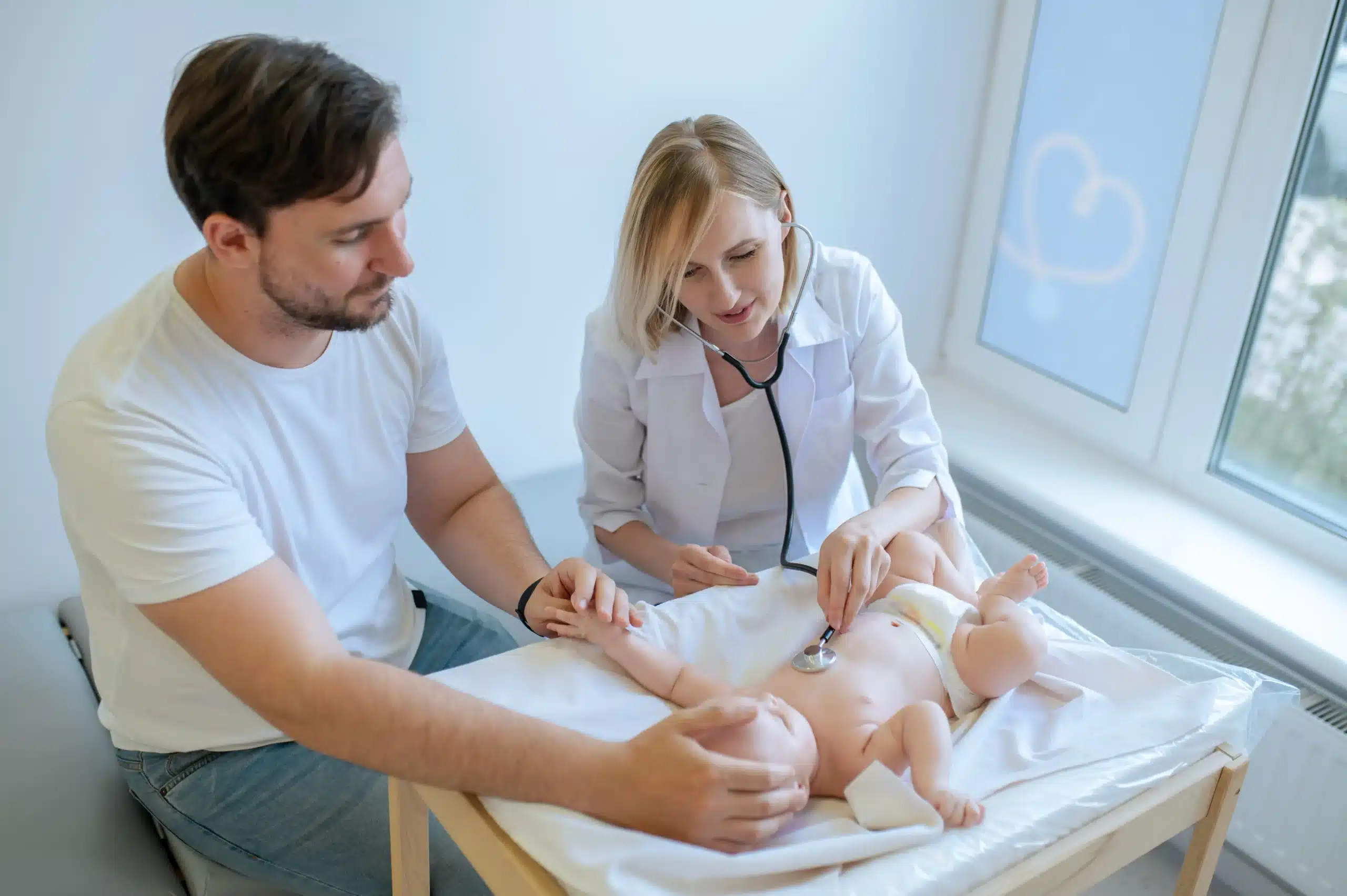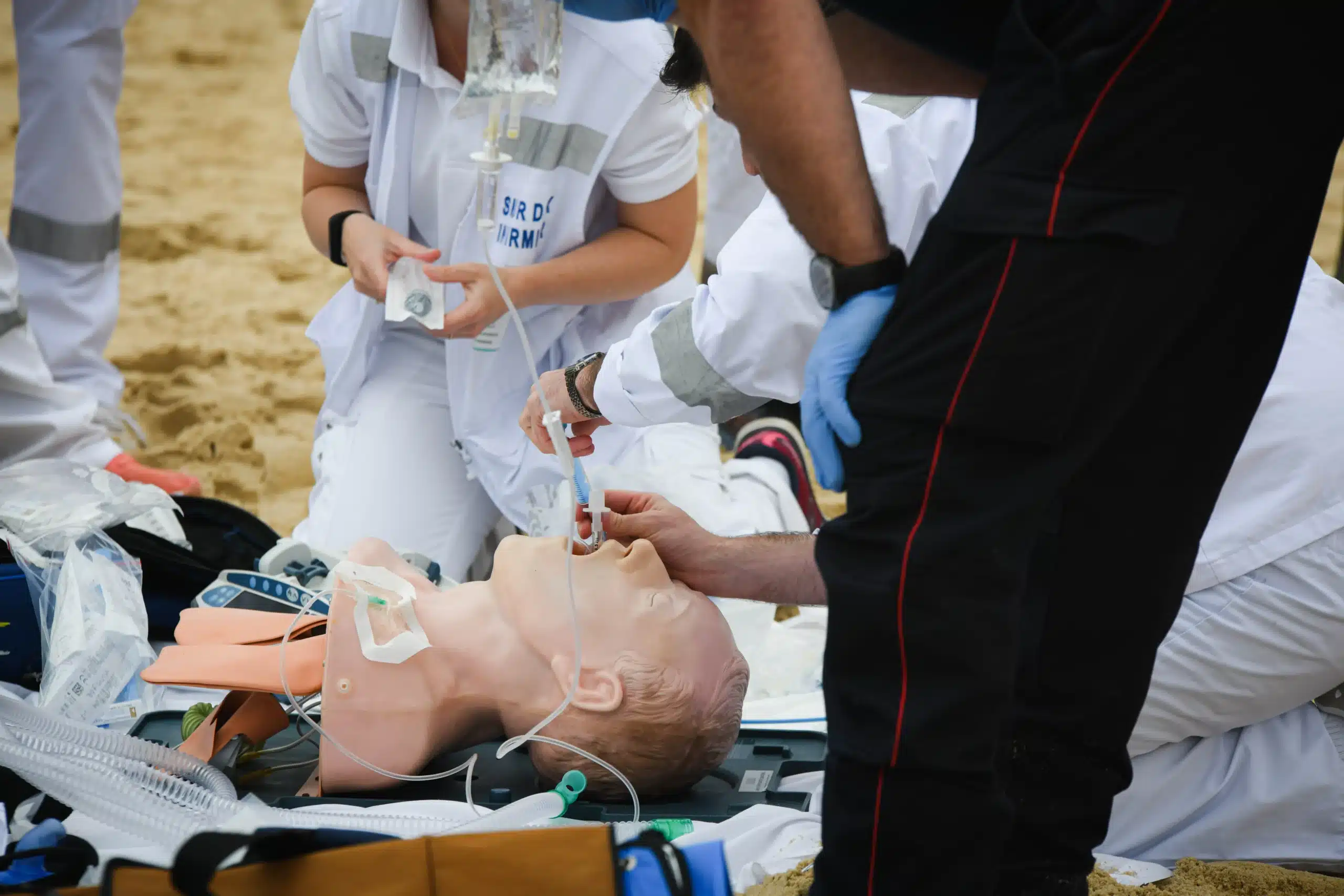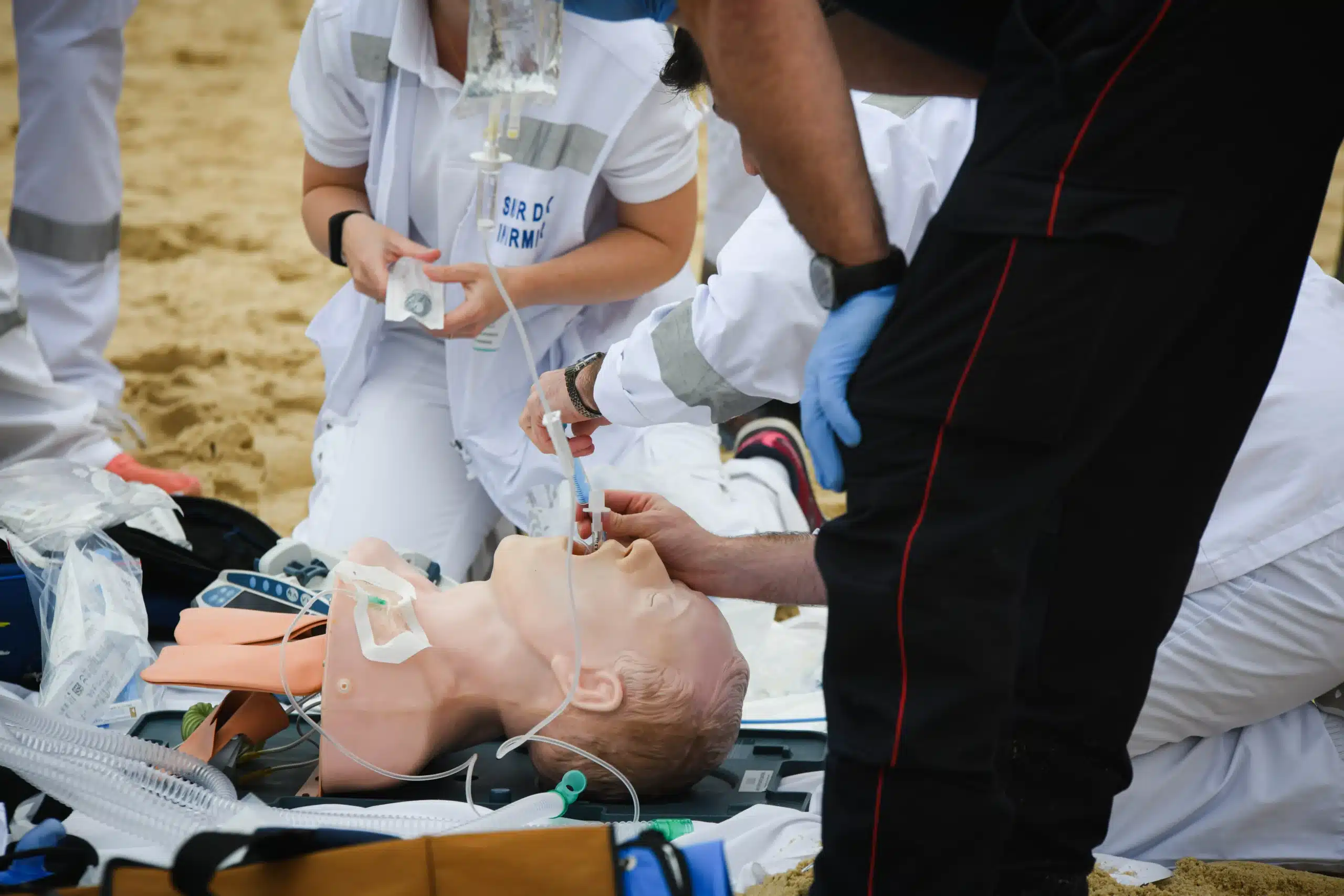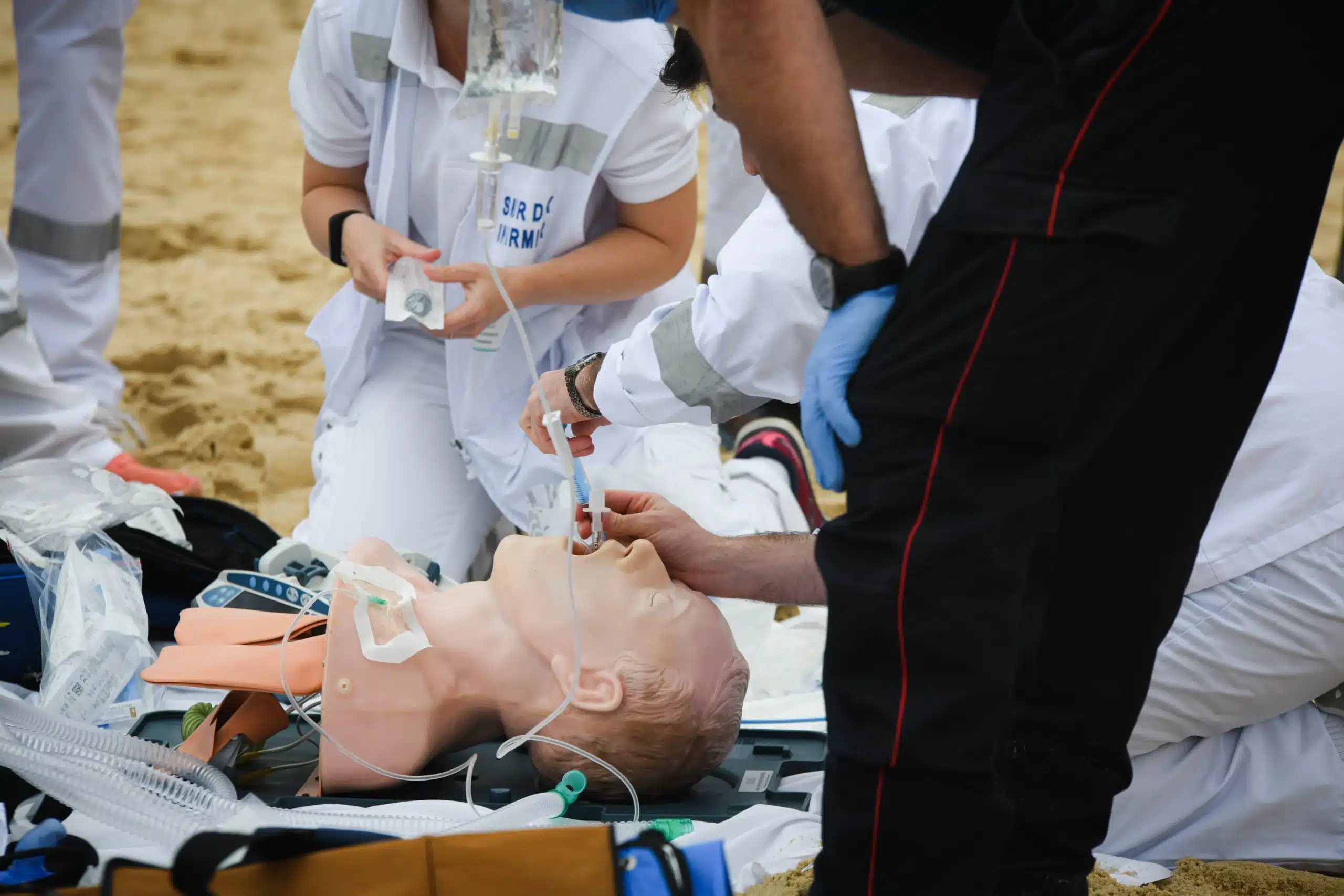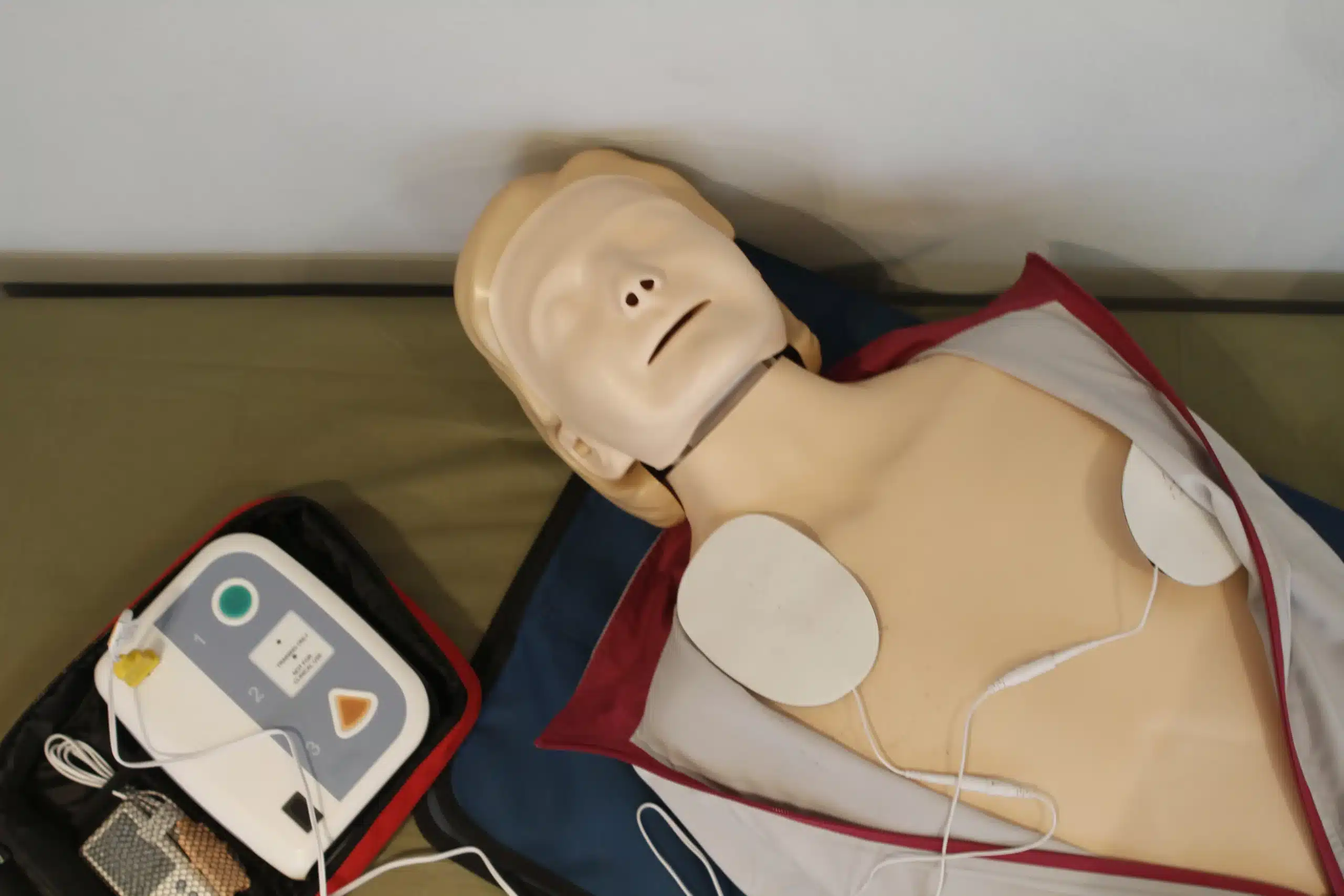Emergencies can happen anytime, anywhere. Being prepared is key, and CPR certification in San Ramon can equip you with the skills to respond effectively. This guide provides a comprehensive overview of CPR training options in San Ramon, helping you choose the right course for your needs. We’ll explore different certification levels, from basic CPR and First Aid to advanced certifications like BLS, ACLS, and PALS. Discover reputable training providers like Safety Training Seminars, compare course costs and schedules, and learn about the long-term benefits of CPR certification. Become a vital link in the chain of survival by gaining the confidence and skills to act in critical situations.
Key Takeaways
- CPR certification empowers you to act in emergencies: Learn essential, life-saving skills with a CPR course tailored to your needs, whether it’s basic CPR and First Aid or advanced certifications like BLS and ACLS.
- Find convenient, affordable training in your area: Pleasanton CPR Classes offers various AHA-certified courses in Pleasanton, serving nearby San Ramon, with a low price guarantee and group discounts.
- CPR training benefits everyone: Gain confidence, enhance your resume, and contribute to a safer community by becoming CPR certified. Choose an accredited program and renew your certification regularly to maintain your skills.
What is CPR Certification in San Ramon?
CPR certification in San Ramon confirms you’ve completed a recognized training program and can perform cardiopulmonary resuscitation (CPR). Organizations like the American Heart Association (AHA) typically provide these certifications, ensuring recipients can respond effectively during medical emergencies. But what exactly is CPR, and why is certification so important?
What is CPR and Why Does it Matter?
CPR (Cardiopulmonary Resuscitation) is a life-saving technique used when someone’s breathing or heartbeat has stopped. This can happen for various reasons, from drowning and choking to heart attacks. Effective CPR can double or triple a person’s chance of survival by maintaining blood flow to vital organs until professional help arrives. Learning CPR empowers you to make a real difference in a critical situation. For more information on the importance of CPR, check out this helpful article on CPR myths and truths.
CPR Certification Courses: What’s Available?
San Ramon offers various CPR certification courses to meet different needs, from basic training for the general public to advanced courses for healthcare professionals. Many of these courses are offered through AHA-certified training centers, ensuring high-quality training. Let’s explore some options:
Basic Life Support (BLS)
BLS certification is crucial for healthcare providers, first responders, and anyone in a medical field. It covers core life-saving skills such as CPR, recognizing life-threatening emergencies like heart attacks and strokes, and using an AED.
Advanced Cardiovascular Life Support (ACLS)
ACLS certification builds upon BLS, focusing on advanced techniques for managing cardiovascular emergencies. It’s designed for healthcare professionals involved in resuscitation efforts.
Pediatric Advanced Life Support (PALS)
PALS certification equips healthcare providers with the specialized skills to respond to medical emergencies involving infants and children.
CPR for the General Public
Even without a healthcare background, learning CPR is invaluable. CPR courses for the general public teach essential CPR techniques and AED use, empowering anyone to respond effectively in an emergency.
First Aid Certification
Often paired with CPR training, first aid certification teaches you to manage various medical situations, from minor injuries to more serious incidents, until professional help arrives.
Find CPR Certification in San Ramon
Finding the right CPR certification course in San Ramon means understanding what’s available. Let’s explore some local providers and resources to help you get started.
Safety Training Seminars
Safety Training Seminars, a woman-owned AHA Training Center, offers a full lineup of American Heart Association (AHA) courses, including BLS, ACLS, PALS, CPR, and First Aid. Conveniently located in nearby Pleasanton, they serve the San Ramon community with courses offered daily. Learn more about their BLS certification or explore their comprehensive CPR and First Aid training options. Their commitment to customer service and a low price guarantee make them a solid choice. Plus, they offer group discounts, a great perk for workplaces or community groups looking to train together. For healthcare providers needing to renew their certifications, Safety Training Seminars also provides RQI classes.
Other Local Providers
San Ramon has several other CPR certification providers. Comparing options is always a good idea, so you can find the best fit for your schedule and learning style.
Heart Start CPR
Heart Start CPR offers online and on-site training with certifications ranging from basic CPR and First Aid to advanced courses like BLS, ACLS, and PALS. They serve San Ramon and other Bay Area locations. Visit the Heart Start CPR website for details.
CPR Education
CPR Education in San Ramon offers a practical approach to CPR and First Aid training, with courses taught by active firefighters. They work with both individuals and businesses. Learn more on the CPR Education website.
CPR Training Center
CPR Training Center, a long-standing AHA-certified training center in San Ramon, offers various CPR and advanced life support courses, including ACLS, PALS, BLS, and NRP. Explore their course options on the CPR Training Center website.
Online vs. In-Person Certification: Which is Right for You?
In-person CPR training offers hands-on practice and direct interaction with an instructor. Online certification, however, provides flexibility and convenience. Online courses are a great way to learn the essentials, but consider your learning preferences and schedule when deciding which format works best. Many organizations now offer hybrid courses that combine online learning with in-person skills sessions—a good balance between flexibility and practical application.
CPR Certification: Process and Formats
CPR certification programs vary in format, duration, and approach. Understanding these differences helps you choose the best fit for your schedule and learning style. Let’s explore the options:
In-Person Classes: What to Expect
In-person CPR classes prioritize hands-on learning and direct interaction with certified instructors. These courses offer a comfortable and interactive learning environment, often with small group sizes for personalized attention. This format allows you to ask questions, receive immediate feedback, and practice your skills with expert guidance. Expect a blend of instruction, demonstrations, and hands-on practice sessions.
Online and Hybrid Courses: Pros and Cons
Online and hybrid CPR courses offer flexibility for busy schedules or those with limited access to in-person training. Online modules deliver essential knowledge and techniques through videos and interactive exercises. While convenient, online courses may not provide the same level of hands-on practice as in-person classes. Hybrid courses combine online learning with in-person skills sessions, balancing flexibility and practical application. This blended approach lets you learn at your own pace and then demonstrate your skills in a real-world setting.
Course Duration and Scheduling
The length of a CPR certification course depends on the type of certification. Basic CPR and First Aid courses typically require a few hours, while advanced certifications like BLS, ACLS, and PALS demand more comprehensive training. Safety Training Seminars offers various courses with flexible scheduling, including weekday and weekend classes. This variety makes it easier to fit CPR training into your schedule.
Hands-On Practice and Skill Assessment
Hands-on practice is crucial for effective CPR training. Using a CPR training manikin, you’ll learn proper hand placement, compression depth, and rescue breath techniques. This practical experience builds muscle memory and confidence, preparing you for real emergencies. Instructors assess your skills throughout the course to ensure you meet the required standards.
Certification: Validity and Renewal
Most CPR certifications are valid for two years. To maintain your certification and stay current with the latest guidelines, you’ll need to take a renewal course after this period. Renewal courses are generally shorter than initial certification courses and focus on reinforcing essential skills and knowledge. Regular renewal ensures you’re always prepared to administer effective CPR.
CPR Certification: Cost and Value
Getting CPR certified is an investment in yourself and your community. Let’s break down the costs and the value it brings.
Course Costs
CPR certification costs vary depending on the course type and provider. Basic CPR and First Aid classes are generally the most affordable, while more advanced certifications like ACLS and PALS are typically more expensive. Think of these costs as an investment in life-saving skills. You can expect to find CPR and First Aid training starting around $75, while instructor training can range from $1,300 to $5,100, covering training, certification, and related expenses.
Group Discounts and Special Offers
Many CPR training providers, including Safety Training Seminars, offer discounts for groups. This is a great option for workplaces, community groups, or families learning together. Contact Safety Training Seminars directly to learn about group discounts and special offers. They offer flexible scheduling and daily classes in Pleasanton and over 60 other cities, making it easier to find a convenient time.
Long-Term Benefits and ROI
The return on investment for CPR certification goes far beyond the monetary. Knowing CPR can save a life. Effective bystander CPR can significantly increase survival rates during cardiac arrest. The financial cost of a CPR class is small compared to the potential to make a difference in a critical situation. Consider the peace of mind that comes with being prepared to help in an emergency.
Benefits of CPR Certification
Getting CPR certified isn’t just about acquiring a skill; it’s about empowering yourself and making a real difference. Whether you’re a healthcare professional, a concerned parent, or simply someone who wants to be prepared, CPR certification offers valuable benefits.
Personal Safety and Confidence
Knowing CPR significantly increases your ability to help in a medical emergency. Imagine you’re at a family gathering when someone suddenly collapses. Instead of feeling helpless, you can step in with the confidence and skills to potentially save a life. Studies show that CPR can double or even triple a person’s chance of survival after cardiac arrest. That’s a powerful reason to get certified. Beyond the practical skills, CPR training instills a sense of preparedness and self-assurance.
Professional Advantages
For many careers, CPR certification is a requirement or a significant advantage. It’s essential in the healthcare field. The American Heart Association RQI program offers a streamlined path to BLS, ACLS, and PALS certification, ensuring healthcare providers stay current with resuscitation techniques. Even outside of healthcare, CPR certification strengthens your resume. Whether you’re a teacher, coach, or childcare provider, demonstrating your commitment to safety makes you a more desirable candidate. It shows you’re prepared to handle emergencies and prioritize the well-being of those around you.
Community Impact and Emergency Preparedness
CPR-trained individuals become vital links in the chain of survival. When emergencies strike, seconds count. People in the community ready to administer CPR can bridge the gap until professional help arrives. This community-wide preparedness creates a safer environment for everyone. By getting CPR training, you’re not just protecting yourself and your loved ones; you’re contributing to a more resilient and prepared community.
Choose the Right CPR Course
Finding the right CPR course involves understanding your needs, comparing available options, and prioritizing reputable providers. Let’s break down the key factors to consider:
Assess Your Needs and Goals
Before you start searching for CPR certification courses, ask yourself a few important questions. Why do you want to become certified? Are you pursuing certification for personal knowledge, job requirements, or to volunteer in your community? Your reason will influence the type of course you need. For example, healthcare providers in San Ramon often require American Heart Association (AHA) certification, while a general CPR and first aid course might suffice for childcare providers or teachers. Knowing your goals will help you narrow your search and choose the right course.
Compare Course Content and Credentials
Not all CPR certifications are created equal. Course content can vary, so compare what each course covers. Look for courses that align with your specific needs. If you’re a healthcare professional, you’ll likely need a course that covers BLS, ACLS, or PALS. For general knowledge and community preparedness, a basic CPR and first aid course may be more appropriate. Also, check the credentials of the organization offering the certification. Safety Training Seminars is a woman-owned AHA Training Center offering high-quality courses.
Why Choose Accredited Certification?
Opting for an accredited CPR certification program offers several advantages. Accredited programs adhere to nationally recognized standards, ensuring a consistent and high-quality learning experience. This also means your certification will be widely accepted. For healthcare professionals, AHA certifications like BLS, ACLS, and PALS are often mandatory. Pleasanton CPR Classes offers the RQI program, a popular choice for medical professionals seeking efficient and up-to-date certification.
Key Features to Look for in a Provider
When choosing a CPR training provider, consider factors like class size, instructor experience, and scheduling flexibility. Smaller classes often allow for more personalized instruction and feedback. Experienced instructors can create a comfortable learning environment and answer your questions effectively. Look for providers like Safety Training Seminars that offer courses frequently and in convenient locations, including San Ramon and nearby cities. A provider with a low price guarantee can also help you manage the cost of certification. If you’re part of a larger group, inquire about group discounts to make training more affordable.
CPR Certification: FAQs and Myths
This section addresses common questions and misconceptions surrounding CPR certification. We’ll debunk some common myths, discuss the ease of training, clarify certification requirements, and explain the scope and limitations of CPR.
Debunking CPR Myths
One persistent myth is that only medical professionals can perform CPR. This isn’t true. CPR is a life-saving technique anyone can learn and use when someone’s heart stops beating effectively. Another misconception is that prior CPR training eliminates the need for refresher courses. Regular CPR training is crucial to maintain up-to-date knowledge and skills. While CPR significantly increases the chances of survival, it doesn’t guarantee a successful resuscitation. It’s essential to remember that CPR is a bridge to further medical care.
Is CPR Training Difficult?
Many people hesitate to learn CPR due to concerns about performing it incorrectly or causing injury. However, CPR courses are designed to be accessible and easy to understand. Qualified instructors guide you through the process, emphasizing proper techniques and minimizing risks. Hands-on practice builds confidence and competence. The desire to help, combined with proper training, can empower you to make a real difference in an emergency.
Certification Requirements
While you don’t legally need certification to perform CPR, formal training through a certified instructor provides the knowledge and skills for effective CPR delivery. Online CPR courses offer a convenient way to learn the fundamentals, but in-person classes at our Pleasanton location provide hands-on practice and personalized feedback from instructors. Pleasanton CPR Classes offers a variety of CPR and First Aid certification courses to meet your needs and schedule.
Understanding CPR’s Scope and Limitations
It’s important to understand that CPR doesn’t restart the heart. Its primary purpose is to maintain blood circulation and oxygen flow to vital organs until professional medical help arrives. While continuous CPR is ideal, pausing briefly to call 911 or retrieve an AED is acceptable. Our BLS certification course covers these critical aspects of CPR. Remember, CPR is a vital link in the chain of survival, buying precious time until advanced medical intervention is available.
Related Articles
- Why CPR is Critical in Healthcare and Life-saving Emergencies
- Online CPR Classes in San Ramon: Your Complete Guide
- CPR Renewal in Pleasanton: Your Easy Guide – Pleasanton CPR Classes
- Debunking Top CPR Myths for Better Life-Saving
- Pleasanton CPR Training: A Complete Guide – Pleasanton CPR Classes
Frequently Asked Questions
What’s the difference between CPR and First Aid? CPR focuses specifically on restoring breathing and circulation when someone’s heart has stopped. First Aid covers a broader range of medical situations, from minor cuts and burns to more serious injuries like fractures and allergic reactions. Both are valuable skills to have, and they often complement each other.
How do I choose the right CPR class in San Ramon? Consider why you need CPR certification. Are you a healthcare professional, a teacher, or simply someone who wants to be prepared for emergencies? This will help determine the right level of certification. Also, think about your learning style. Do you prefer in-person classes or the flexibility of online learning? Compare course content, check instructor credentials, and look for providers like Safety Training Seminars with a low price guarantee and convenient locations.
How long does CPR certification last, and how do I renew it? Most CPR certifications are valid for two years. To renew, you’ll need to take a recertification course. These courses are typically shorter than the initial certification and focus on refreshing your skills and knowledge. Check with your certifying organization or training provider for specific renewal requirements.
What if I’m nervous about performing CPR in a real emergency? It’s natural to feel apprehensive, but remember that any attempt at CPR is better than none. High-quality training builds confidence and prepares you to respond effectively. Hands-on practice during your CPR course will help you develop the muscle memory and skills you need. Trust your training, and know that you’re taking a crucial step to potentially save a life.
Why should I get certified if I can learn CPR online for free? While free online resources can introduce you to CPR basics, formal certification through a recognized provider like the American Heart Association offers several advantages. It ensures you receive comprehensive training that meets established standards, provides hands-on practice with manikins and feedback from certified instructors, and gives you a credential that’s widely accepted by employers and organizations.
